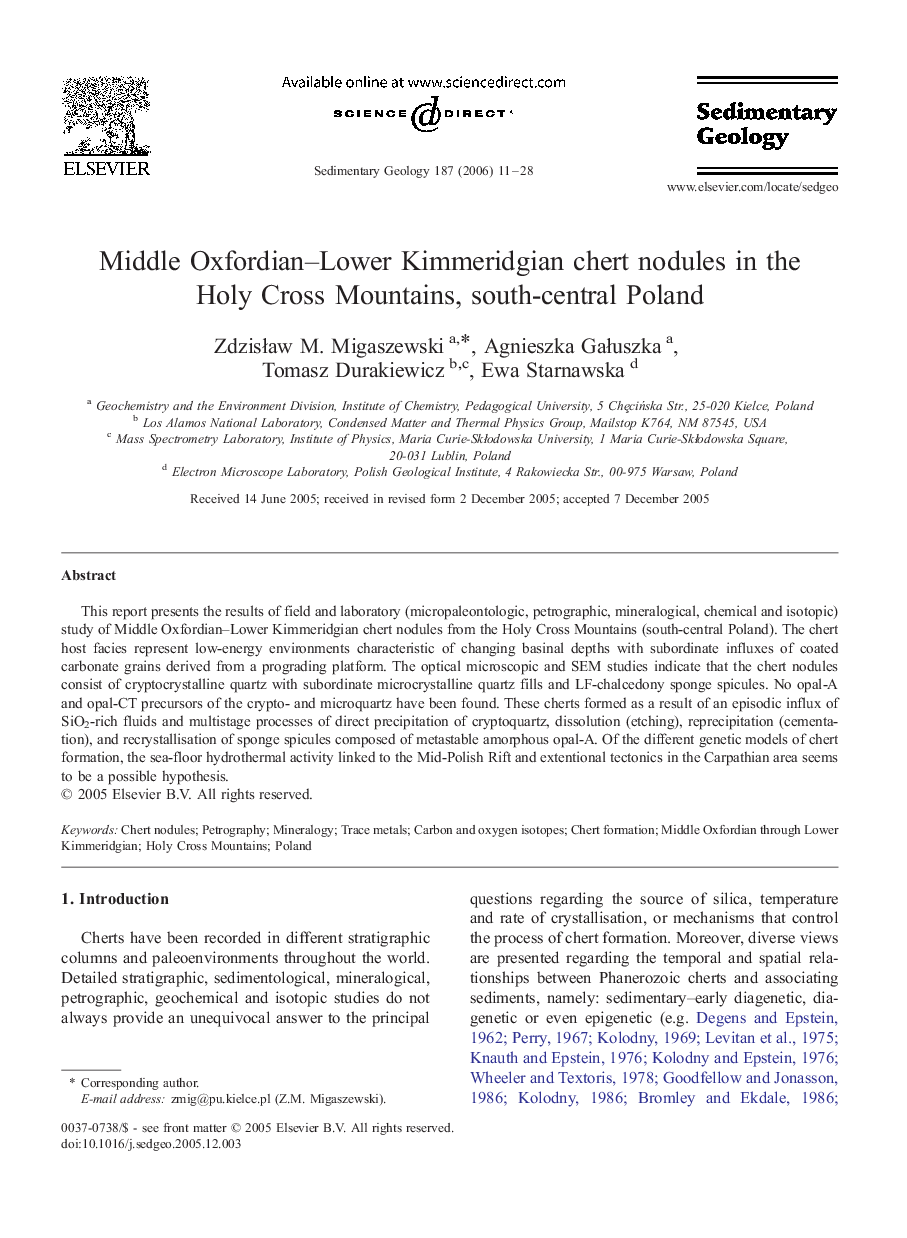| کد مقاله | کد نشریه | سال انتشار | مقاله انگلیسی | نسخه تمام متن |
|---|---|---|---|---|
| 4691099 | 1636186 | 2006 | 18 صفحه PDF | دانلود رایگان |

This report presents the results of field and laboratory (micropaleontologic, petrographic, mineralogical, chemical and isotopic) study of Middle Oxfordian–Lower Kimmeridgian chert nodules from the Holy Cross Mountains (south-central Poland). The chert host facies represent low-energy environments characteristic of changing basinal depths with subordinate influxes of coated carbonate grains derived from a prograding platform. The optical microscopic and SEM studies indicate that the chert nodules consist of cryptocrystalline quartz with subordinate microcrystalline quartz fills and LF-chalcedony sponge spicules. No opal-A and opal-CT precursors of the crypto- and microquartz have been found. These cherts formed as a result of an episodic influx of SiO2-rich fluids and multistage processes of direct precipitation of cryptoquartz, dissolution (etching), reprecipitation (cementation), and recrystallisation of sponge spicules composed of metastable amorphous opal-A. Of the different genetic models of chert formation, the sea-floor hydrothermal activity linked to the Mid-Polish Rift and extentional tectonics in the Carpathian area seems to be a possible hypothesis.
Journal: Sedimentary Geology - Volume 187, Issues 1–2, 15 May 2006, Pages 11–28